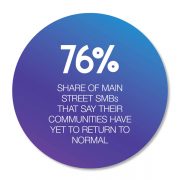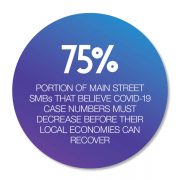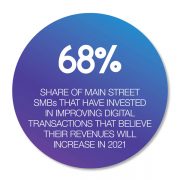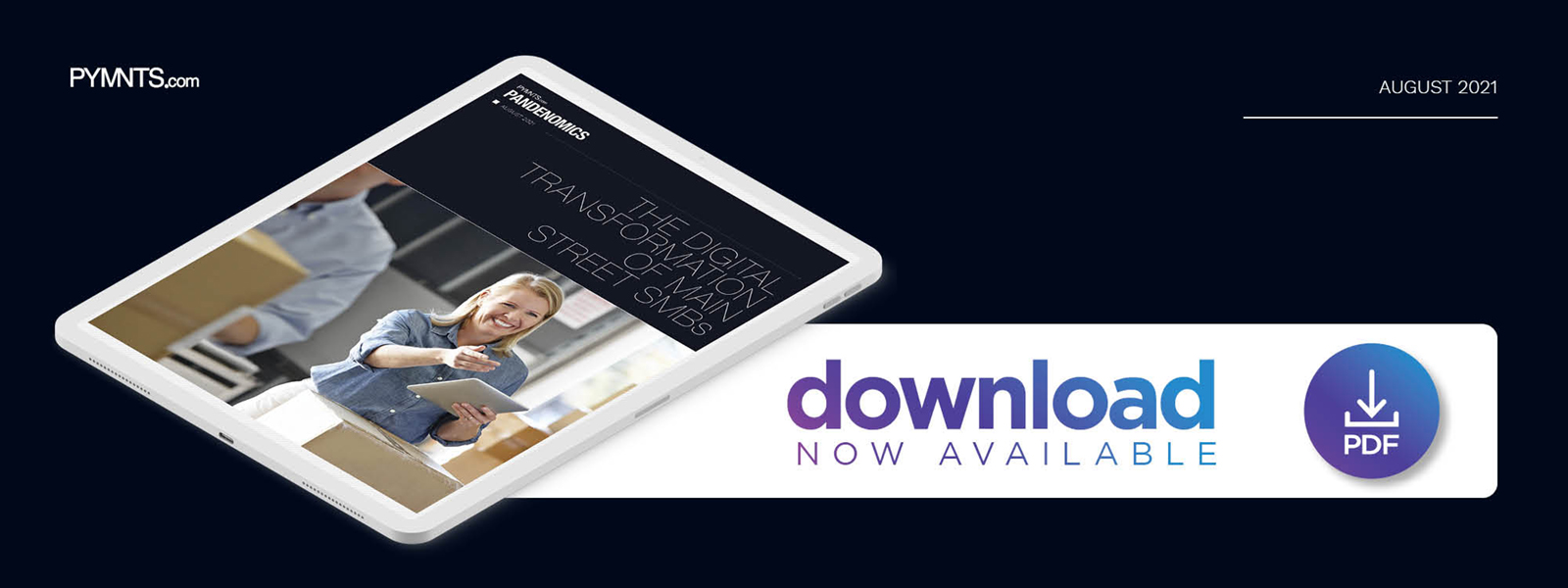Two-Thirds of Main Street SMBs Got 2021 Sales Lift From Digital Payment Innovations

That is how many of the small and mid-sized businesses on Main Street U.S.A. say their local communities are back to where they were before March 2020. The rest say they are still far from normal, whether it is their communities or their economies — and  those in rural areas are even more pessimistic.
those in rural areas are even more pessimistic.
Most of these businesses have come to believe that they and their economies can never fully go back to “business as usual” until the pandemic has fully subsided, no matter what local mandates might be in place. This is the conviction of 75 percent of Main Street SMBs, in fact, while 69 percent say that local residents must first be fully inoculated against the virus.
And yet, not all is gloom and doom on Main Street U.S.A. Many small business owners have cracked the code of operating in this economy, which is becoming more digitally driven with each passing day. What businesses have managed to keep their doors open, and even prosper in the face of unprecedented challenges and uncertainties?
In The Digital Transformation Of Main Street SMBs, PYMNTS takes the temperature on the financial health of Main Street U.S.A. as the nation reels from a recent surge in COVID-19 cases. We surveyed 638 small and mid-sized businesses with brick-and-mortar stores in commercial districts across the United States to find out how far they think they are from recovering from the pandemic’s impact, what steps they believe might be necessary for their local economies to recover and how they are leveraging digital innovation to boost their revenues as the connected economy continues to grow.
from the pandemic’s impact, what steps they believe might be necessary for their local economies to recover and how they are leveraging digital innovation to boost their revenues as the connected economy continues to grow.
Our research shows that although the majority of Main Street SMBs feel their local communities are far from where they were 18 months ago, that does not mean they are struggling. Many of them have found new, innovative ways to drive sales in an increasingly digital-first economy — and those that have are faring far better than their peers. Main Street SMBs that have invested in touchless payments are not only 49 percent likelier to have seen their revenues increase in 2020, but are also five times likelier to expect their revenues to increase in 2021. The same can be said of those that have invested in software to support digital transactions.
There are still several key roadblocks preventing even these digital innovators from recovering, however, with labor shortages  being one of the most pressing. Thirty-two percent of all Main Street SMBs say that they are struggling to fill the staff positions they need to reopen at full capacity, and 73 percent believe that returning to full capacity is critical to helping their communities fully recover.
being one of the most pressing. Thirty-two percent of all Main Street SMBs say that they are struggling to fill the staff positions they need to reopen at full capacity, and 73 percent believe that returning to full capacity is critical to helping their communities fully recover.
This is only the beginning of a developing story of how Main Street U.S.A. is working to reinvent itself in the face of mounting volatility and spreading contagion, however. The Road To Recovery details more of their ongoing journey.
To find out more about how Main Street SMBs are adapting to an increasingly unpredictable market, download the study.
